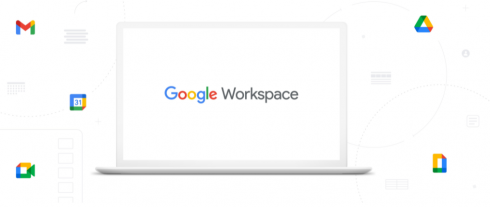
Google has announced that Google Workspace is now accessible by anyone with a Google account. Google Workspace is a collection of Google’s apps, such as Gmail, Calendar, Drive, Docs, Sheets, Slides, Meet, and more — available through a single integrated experience.
It was first announced last October and since then the company has released a number of innovations to it for businesses, nonprofits, and classrooms.
Users can use Google Workspace to create a secure collaboration space to share ideas and keep track of information. It provides suggestions for recommended files and people to share with. To access this integrated, collaborative experience users need to turn on Google Chat. They can then use Rooms in Google Chat as a place for connecting, creating, and collaborating.
Google plans on evolving Rooms over the coming months into Spaces. It will introduce a new user interface, in-line topic threading, presence indicators, custom statuses, expressive reactions, and a collapsible view.
The company also announced Google Workspace Individual, which is designed for small business owners. It provides premium capabilities such as smart booking services, professional video meetings, personalized email marketing, and more. Google Workspace Individual will soon be available in the United States, Canada, Mexico, Brazil, Australia, and Japan.
“Every day, the world’s most innovative companies, schools and nonprofits use Google Workspace to transform how people work and achieve more together. It’s a daily part of how leading healthcare providers revolutionize patient care, schools turn remote learning into an immersive, personalized experience, and aerospace companies rethink flight. Now, with Google Workspace for everyone, you can organize your junior sports league with ease, take that fundraiser to the next level, or even turn your hobby into a business. Whatever it is, Google Workspace helps people (teams, families, friends, volunteers, neighbors…) connect, create and collaborate,” Kelly Waldher, vice president of marketing for Google Workspace, and Aparna Pappu, vice president of engineering at Google Workspace, wrote in a post.
In addition, Google announced new security and privacy features protecting Workspace. It has launched Google Workspace Client-side encryption, which gives customers direct control over their encryption keys and identity service. According to Google, client-side encryption is especially helpful for organizations storing sensitive data, such as intellectual property, healthcare records, or financial data.
There are also new trust rules for Drive, which gives customers more control over how files can be shared within and outside of their organization. They will be able to set specific rules for organizational units and groups, which allows for a more granular approach than applying blanket policies to all users.
New Drive labels will allow users to classify their files to ensure they’re handled correctly. Drive labels also integrate with Google workspace’s data loss prevention (DLP) capabilities. Files can also be classified automatically based on DLP rules defined by the administrator.
In addition, the company is introducing new phishing and malware protection. When abusive content is found, the file will be flagged and will only be visible to admins and the file’s owner, preventing sharing and reducing the number of users exposed to the abusive content.
“These Google Workspace innovations further our longstanding mission to protect and secure anywhere, anytime collaboration. They help our customers realize the full potential of a trusted, cloud-native platform that’s built for the evolving hybrid work environment. Client-side encryption is an especially important development for Google Workspace. When combined with our other encryption capabilities, it provides our customers—even in the most heavily regulated industries—with additional controls, safeguards, and peace of mind,” Karthik Lakshminarayanan and Erika Trautman, directors of product management of Google Workspace, wrote in a post.






